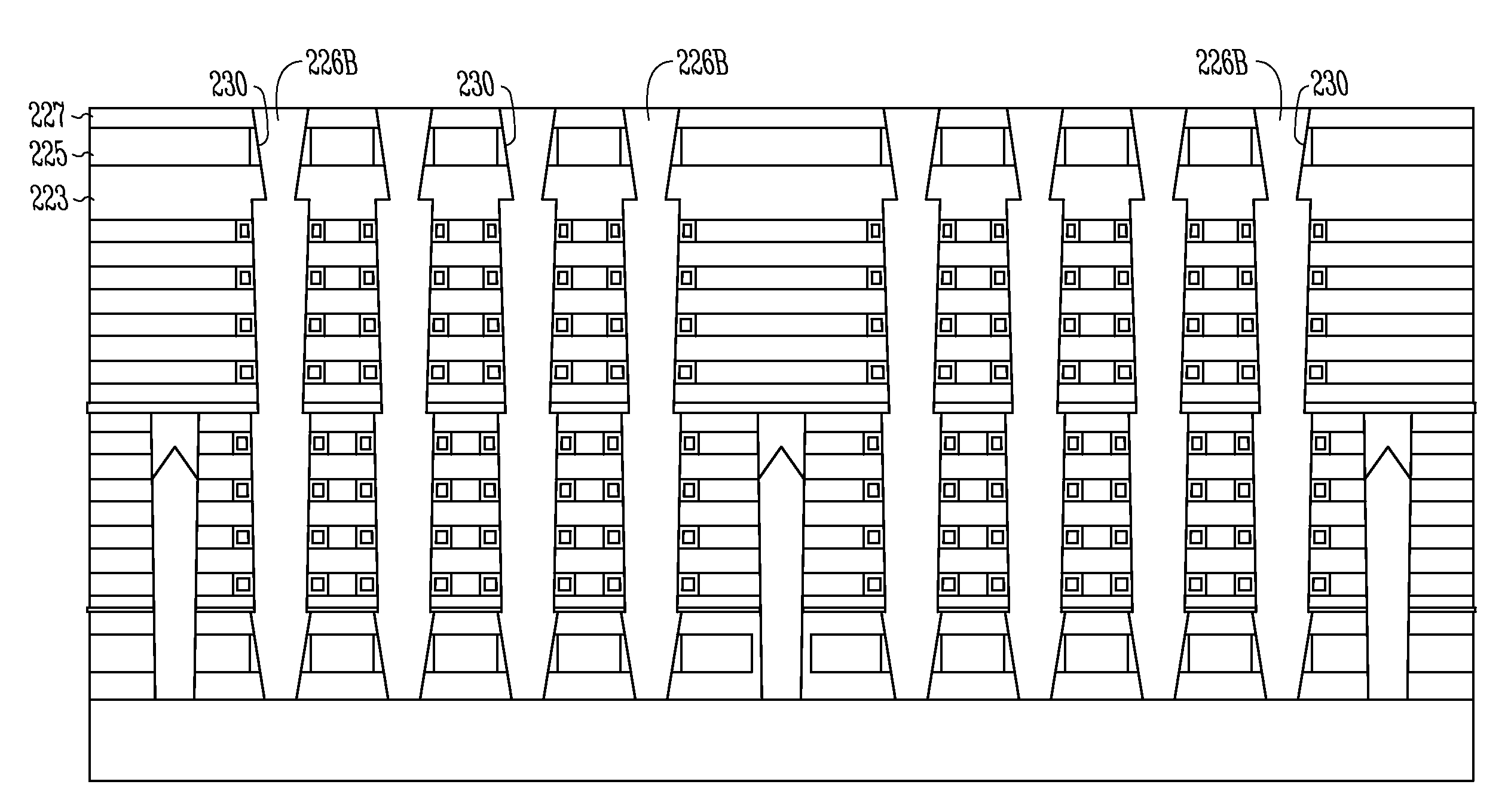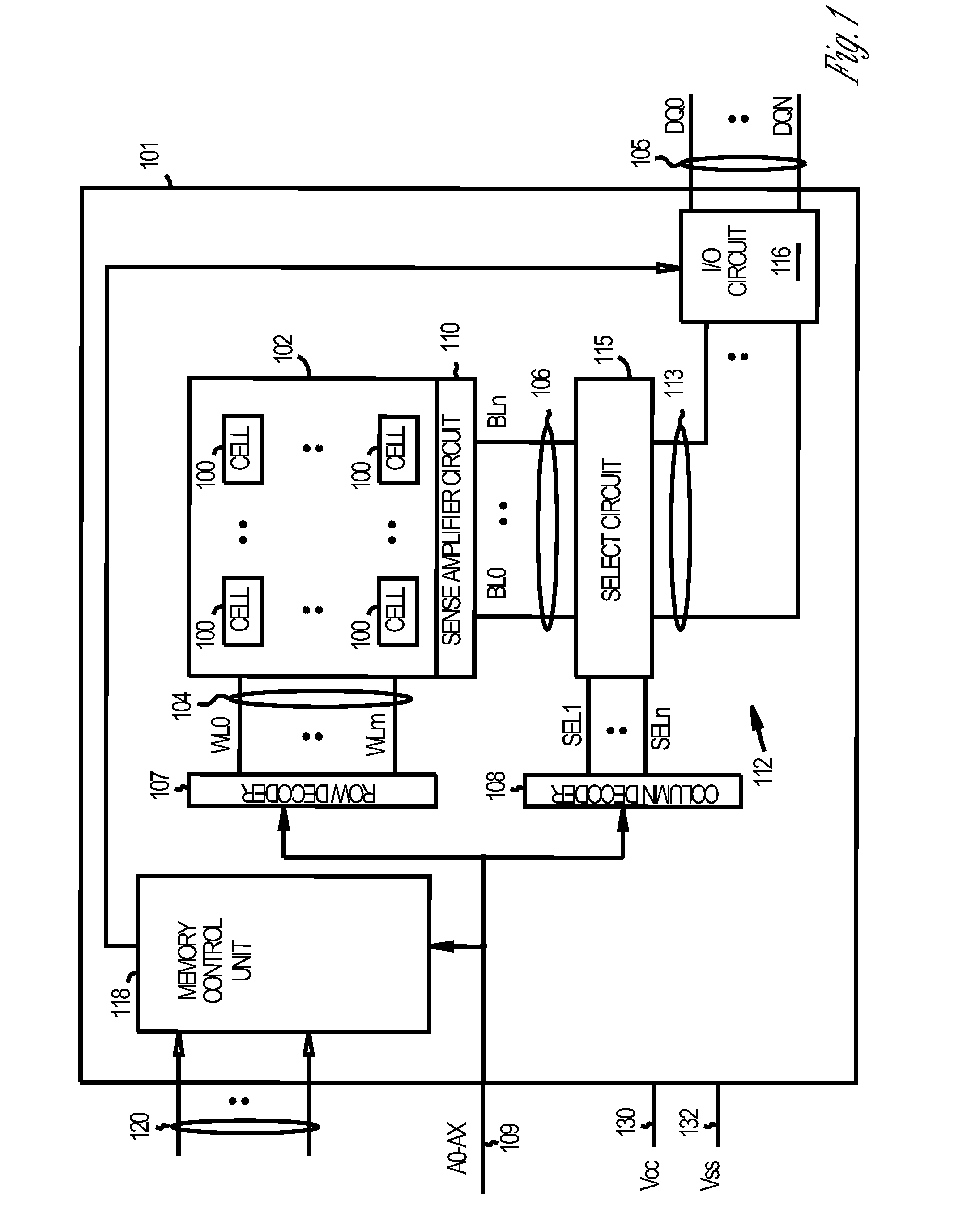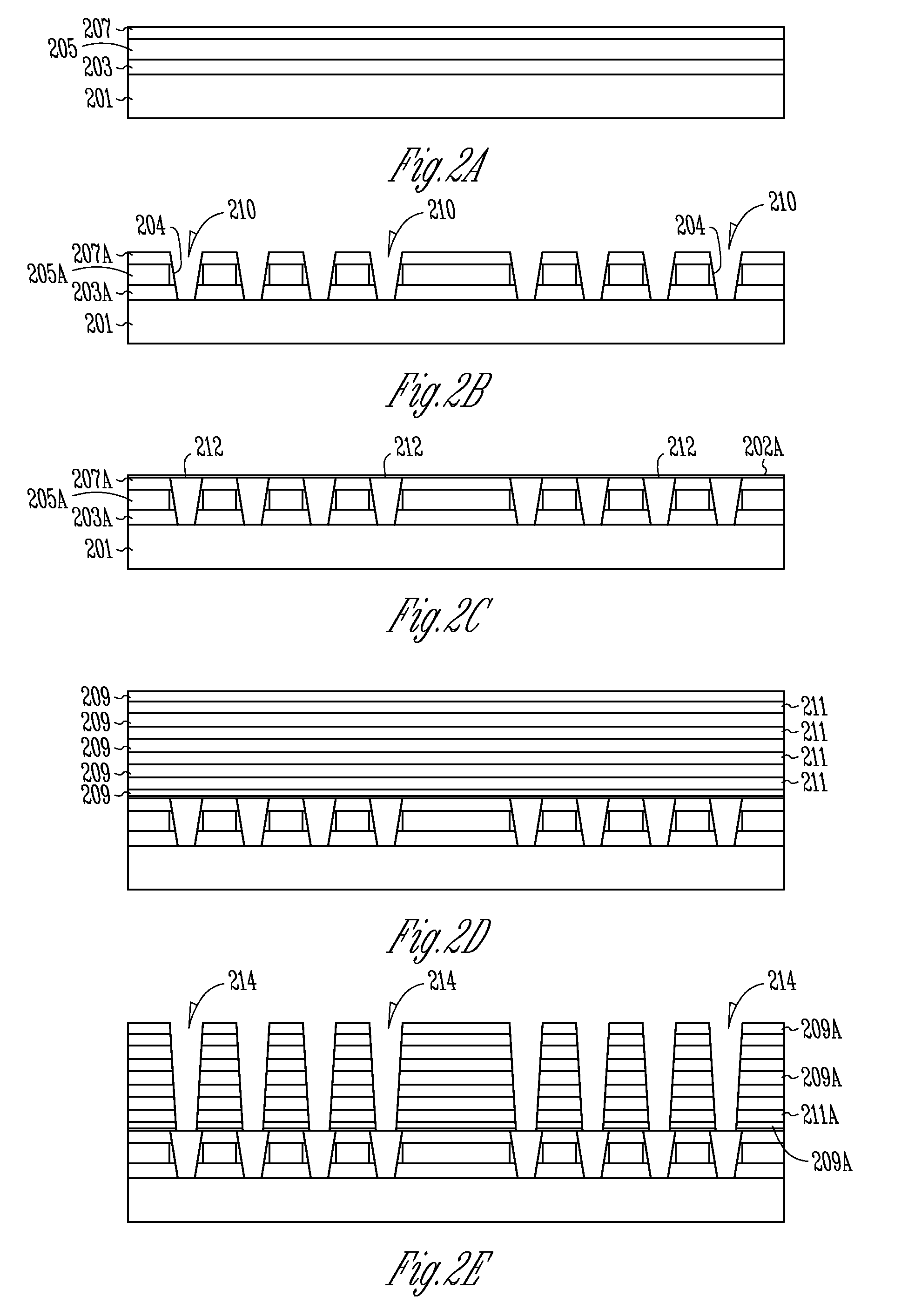Apparatuses and methods of forming apparatuses using a partial deck-by-deck process flow
a technology of forming apparatus and process flow, which is applied in the direction of electrical apparatus, semiconductor devices, instruments, etc., can solve the problems of increasing power consumption, thermal effects on devices formed in a lower deck, and degradation of cell reliability and integrity
- Summary
- Abstract
- Description
- Claims
- Application Information
AI Technical Summary
Benefits of technology
Problems solved by technology
Method used
Image
Examples
Embodiment Construction
[0005]A deck-by-deck process flow has an advantage of a lower etching aspect ratio. However, in the prior art, devices formed in a lower deck are subject to effects from thermal processes during upper deck processing. The additional thermal effects can cause thicker materials to be formed at the lower deck, potentially leading to a degradation in cell reliability and integrity, problems with channel mobility, salicide instability, and increased power usage.
[0006]The embodiments disclosed herein may provide deck-by-deck formation and shared processing on, for example, one or all of the cell tunnel oxidations, channel poly-silicon depositions, or word line salicidation operations. The disclosed formation operations may thus realize a lower etching aspect ratio coupled with a reduced or eliminated impact on lower decks due to thermal processing of upper or subsequently formed decks.
[0007]One disclosed method of fabrication, and the resulting apparatuses, has an architecture comprising ...
PUM
 Login to View More
Login to View More Abstract
Description
Claims
Application Information
 Login to View More
Login to View More - R&D
- Intellectual Property
- Life Sciences
- Materials
- Tech Scout
- Unparalleled Data Quality
- Higher Quality Content
- 60% Fewer Hallucinations
Browse by: Latest US Patents, China's latest patents, Technical Efficacy Thesaurus, Application Domain, Technology Topic, Popular Technical Reports.
© 2025 PatSnap. All rights reserved.Legal|Privacy policy|Modern Slavery Act Transparency Statement|Sitemap|About US| Contact US: help@patsnap.com



